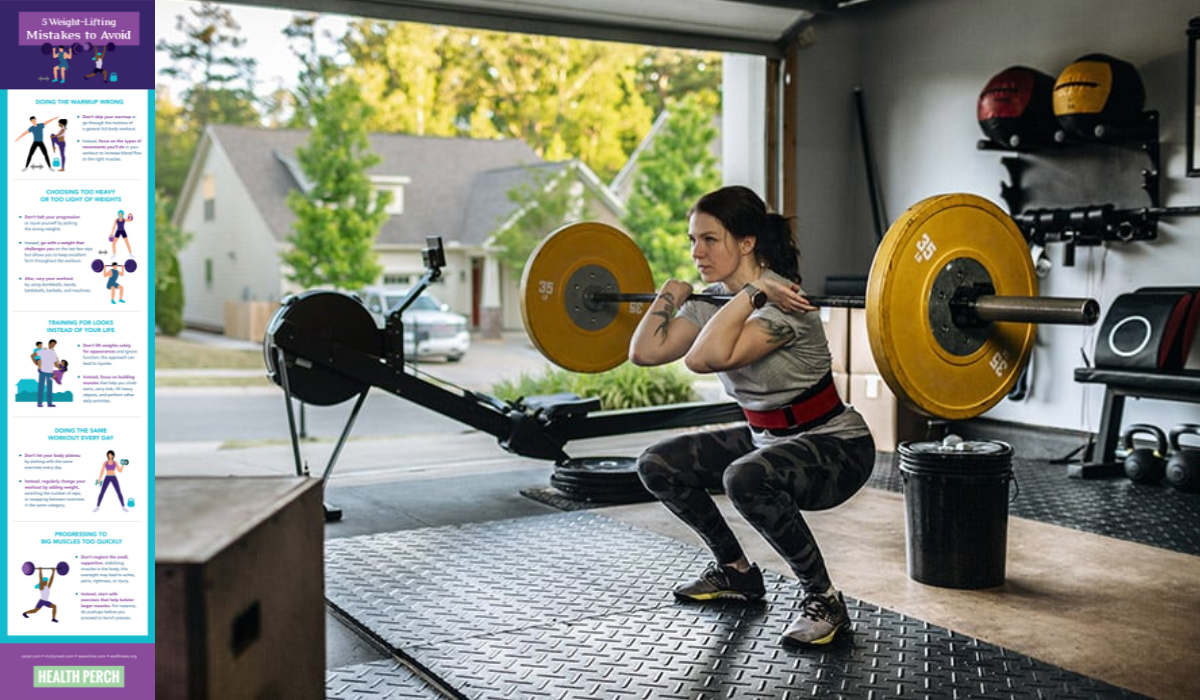Weightlifting is a well-known activity that helps develop muscles and fortitude. However, when lifting heavy weights above your head, there might be more to consider than just gaining biceps. Have you ever felt a strange sensation in your ears after an intense workout session? This sensation could be linked to a condition known as eustachian tube dysfunction (ETD). Can Lifting Heavy Weight Above Shoulders Cause ETD? In this blog post, we’ll explore the surprising connection between lifting heavy weights above your shoulders and ETD and provide you with valuable tips for safe workouts.
Understanding Weightlifting and Its Benefits
Weightlifting is a fantastic exercise for enhancing muscle growth, increasing strength, and boosting overall fitness. Whether you’re a seasoned gym-goer or a beginner, incorporating weightlifting into your routine can offer numerous health benefits:
- Muscle Development: It strengthens and tones your muscles.
- Bone Thickness: Improves bone strength, lessening the gamble of osteoporosis.
- Metabolic Rate: Increases metabolism, aiding in weight management.
While weightlifting is highly beneficial, being aware of potential risks is crucial, particularly when lifting weights above your head.
What is Eustachian Tube Dysfunction (ETD)?
Eustachian Tube Dysfunction occurs when the Eustachian tubes, those tiny tubes that connect your middle ear to the back of your throat, become blocked or dysfunctional. These tubes are vital in equalizing pressure on both sides of your eardrum, ensuring proper hearing and ear health. When they aren’t functioning correctly, you may experience:
- Hearing loss
- Ear fullness or “stuffed-up” sensation
- Ear pain
- Fluid buildup (serous effusion)
It’s essential to understand how ETD can be affected by activities like weightlifting.
Can Lifting Heavy Weights Cause ETD?
The question remains whether lifting heavy weights above your shoulders can contribute to Eustachian Tube Dysfunction. While lifting weights itself doesn’t directly cause ETD, certain factors related to weightlifting may increase the risk:
- Strain and Pressure: Straining the muscles around your neck, shoulders, and upper back during exercises like overhead lifts can increase pressure around the Eustachian tubes.
- Incorrect Form: Poor lifting techniques can lead to unnecessary strain on your body, potentially impacting your ears.
- Holding Breath: Holding your breath during heavy lifts can create pressure changes that affect your Eustachian tubes.
Awareness of these factors is crucial for preventing ETD while continuing your fitness regimen.
Recognizing Symptoms of ETD
After an intense weightlifting session, it’s essential to recognize any symptoms of ETD. These symptoms may include:
- Ear discomfort or pain
- Hearing difficulties
- Dizziness or balance issues
- The feeling of fullness in the ears
If you’ve noticed these symptoms following your workouts, it might be time to assess your lifting technique.
Tips for Preventing ETD While USA Weightlifting
Preventing ETD while enjoying your weightlifting routine is achievable with some mindful adjustments:
- Use Proper Technique: Focus on maintaining good posture and using the correct form to minimize strain on your neck and shoulders.
- Gradually Increase Weight: Avoid sudden weight jumps. Gradually increase your lifting load to allow your body to adapt.
- Listen to Your Body: Pay attention to how your body reacts during and after workouts. Assuming you experience inconvenience, change your routine accordingly.
Incorporating these tips into your workouts can help reduce the risk of ETD and ensure a safer lifting experience.
The Importance of Breathing
Proper breathing techniques during weightlifting are critical for preventing pressure-related issues, including ETD. Here’s what you can do:
- Exhale During Lifts: Breathe out during the exertion phase of the lift (e.g., when raising weights) to reduce internal pressure.
- Inhale During Lowering: Inhale during the lowering phase to maintain pressure balance.
- Avoid Holding Breath: Avoid holding your breath for prolonged periods during lifts.
Mastering your breathing can significantly impact your workout experience.
Listening to Your Body’s Signals
Your body often sends signals when something isn’t right. Pay attention to the signs and sensations you experience when weightlifting. If you notice any of the following, it’s time to reevaluate your routine:
- Persistent ear discomfort
- Increased pressure in your ears
- Difficulty hearing clearly
Listening to your body is vital to maintaining ear health while pursuing your fitness goals.
Modifying Your Routine
If you’re concerned about the risk of ETD but still want to enjoy weightlifting, consider making some modifications:
- Light to Moderate Exercise: Opt for lighter weights and moderate intensity to reduce strain.
- Alternate Exercises: Incorporate exercises that don’t involve lifting weights above your head.
- Consult Healthcare Providers: If unsure, seek guidance from healthcare professionals or fitness trainers.
These adjustments can help you continue your fitness journey safely.
When to Seek Professional Advice
Experiencing symptoms of ETD after weightlifting can be concerning. Consulting with a healthcare professional is crucial if these symptoms persist or worsen. They can provide personalized advice and recommend appropriate measures to protect your ear’s health.
Conclusion: Can Lifting Heavy Weight Above Shoulders Cause ETD
Weightlifting is an excellent way to stay fit and build strength, but it’s essential to exercise caution when lifting weights above your shoulders. Understanding the potential connection between this activity and Eustachian Tube Dysfunction (ETD) can help you make informed decisions about your workout routine.
By using proper techniques, gradually increasing weights, and listening to your body’s signals, you can minimize the risk of ETD while enjoying the benefits of weightlifting. If you experience persistent symptoms, don’t hesitate to seek professional guidance.

